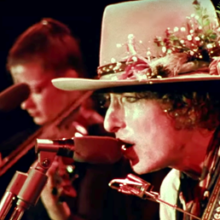

When filmmakers turn to historical subjects of oppression and persecution, it can be difficult to communicate the feeling of living through these events. Well, independent director RaMell Ross found a way to do this, in his adaptation of a 2019 Colson Whitehead novel about a Jim Crow era juvenile reformatory in Florida, Nickel Boys.
Nickel Boys opens in 1962, with an African American boy in Tallahassee named Elwood Curtis, raised primarily by his loving grandmother Hattie. Elwood is quiet and studious; he does well at school. At 17, he gets an offer to attend a free study program at a nearby black college. But when he hitches a ride with a man driving a stolen car, he ends up getting unfairly sentenced to a juvenile prison called The Nickel Academy, which they call a “reform school” because they teach classes, but is in fact an abusive work camp where black kids are treated separately and worse than white ones, and where they do manual labor from sunup to sundown. Right off the bat, when Elwood tries to help up another boy who is being attacked, he is punished by getting beaten and whipped.
The other boys are mostly hostile to the bookish Elwood. But there’s one, Jack Turner, who takes a liking to him. Turner is an orphan who’s been in trouble longer and seen more of the world than Elwood. He tries to temper Elwood’s rage and idealism by teaching him ways to survive in the prison. Gradually they discover that they’re kindred spirits, able to instinctively communicate and empathize with one another in the midst of daily oppression. Their bond will prove important in the struggles lying ahead.
So this is the basic outline of the story. I expected a social drama in one of the usual styles. But Ross employs a radical impressionist technique. His central element is the point of view shot. The camera plays the role of Elwood, so that it seems as if the camera is walking, talking, and experiencing the story, and the people in the film are talking and relating directly to the camera. Rarely have I seen a movie that used this method so much, basically through the entire film, and so successfully. Elwood’s misfortunes are incredibly vivid because we, the audience, are taking his place in the narrative, seeing and hearing everything he sees and hears. Later, when Turner shows up as Elwood’s friend, Ross starts to switch to his point of view sometimes, so that we are in Turner’s place and seeing what he sees, including Elwood’s face, which we haven’t seen clearly until now. From this point on, these two points of view alternate throughout the film.
Even more remarkable is how this point of view style includes the emotions and imagination of the two main characters, with contemporary film and audio clips, passages of revery in nature and a fascination with astronomy and outer space—the Apollo space flights were going on at the time of the story. Elwood and Turner’s subjective experience includes dream-like passages and evocations of longing, fear, and great love.
Elwood is played by Ethan Herisse with a depth and seriousness that centers the film. Brandon Wilson plays Turner with ease and assurance. Nickel Boys is a film of soul-shattering brilliance, surprising us with its tale of resistance, grief, and beauty.






